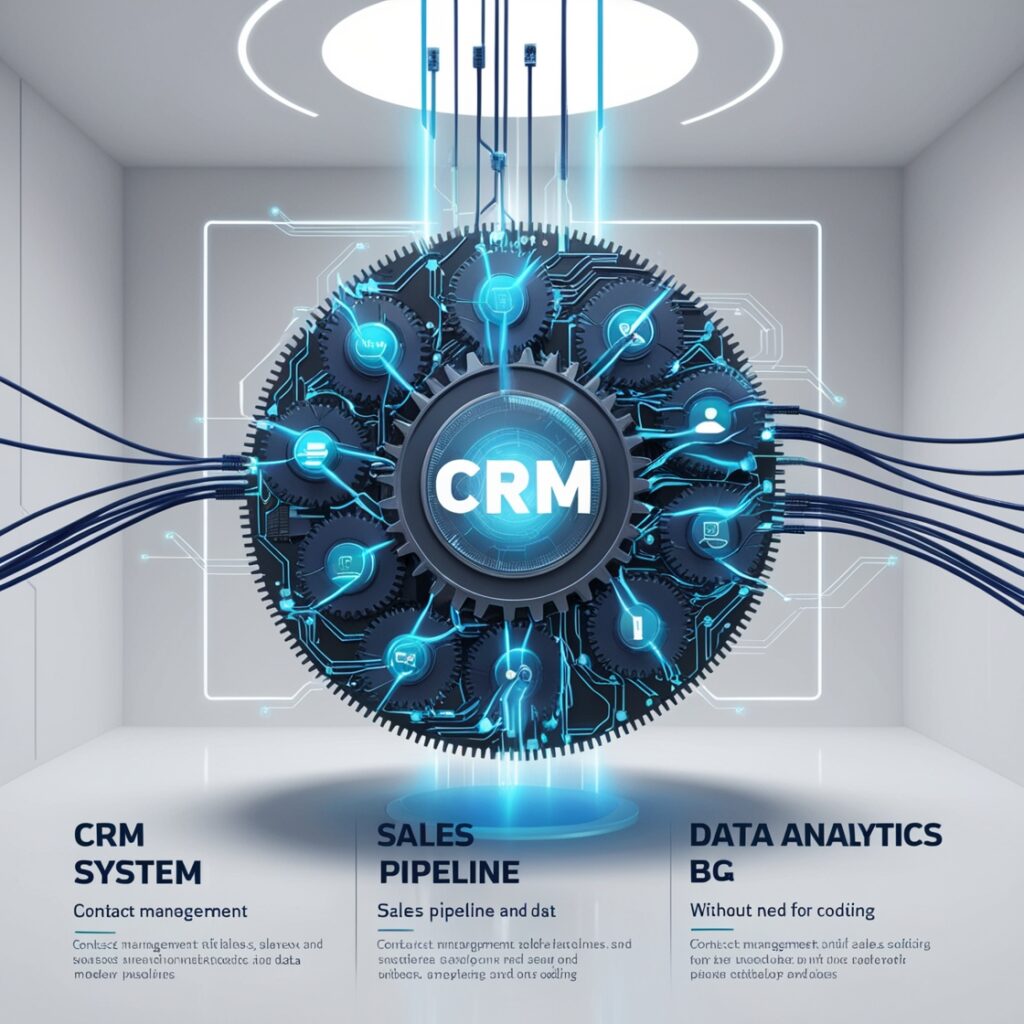Customer Relationship Management (CRM) systems are essential for startups looking to manage customer interactions, track leads, and boost sales. However, traditional CRM solutions often require significant investment and technical expertise. The good news is that you can now build a CRM system for your startup without coding, saving time and resources while customizing it to your business needs.
In this guide, we’ll walk you through how to create a no-code CRM system that supports your startup’s growth.
What is a CRM System?
A CRM (Customer Relationship Management) system is a software tool that helps businesses manage relationships with customers and prospects. It organizes customer data, tracks sales, and improves communication, making it easier to deliver personalized experiences.
Benefits of a No-Code CRM for Startups
Building a CRM system without coding offers several advantages:
1. Cost-Effective: Avoid expensive development and maintenance costs.
2. Quick Implementation: Set up your CRM in days, not months.
3. Customizable: Tailor workflows, fields, and automation to your specific needs.
4. Ease of Use: Intuitive interfaces require no technical knowledge.
5. Scalability: Adapt your CRM as your startup grows.
Steps to Build a CRM System Without Coding
Step 1: Identify Your CRM Requirements
Before choosing tools, define the key functions your CRM should have:
• Contact Management: Store and organize customer data.
• Lead Tracking: Monitor the sales pipeline and follow up with leads.
• Task Management: Assign and track tasks for your team.
• Reporting and Analytics: Measure performance and generate insights.
• Integration: Sync with tools like email, calendars, or marketing software.
Step 2: Choose a No-Code CRM Platform
No-code platforms make it easy to design and launch a CRM system. Popular options include:
1. Airtable
• Flexible database-style CRM.
• Offers templates for sales pipelines and contact management.
2. Zoho Creator
• Drag-and-drop interface for building custom CRM apps.
• Integrates with other Zoho tools like Zoho Mail and Zoho Books.
3. Bubble
• Ideal for creating web-based CRM applications.
• Provides complete control over design and workflows.
4. Notion
• Simple, modular CRM setup.
• Great for startups needing lightweight project and customer management.
5. Glide
• Build a mobile CRM app from a Google Sheet.
• Perfect for teams on the go.
Step 3: Design Your CRM Workflow
Customize your CRM to match your startup’s processes:
1. Set Up Databases:
• Create tables for contacts, deals, tasks, and activities.
• Add relevant fields (e.g., customer name, email, status).
2. Automate Processes:
• Use triggers and actions to automate repetitive tasks, such as sending follow-up emails.
3. Define Permissions:
• Assign roles and access levels for your team.
4. Visualize Pipelines:
• Use Kanban boards or Gantt charts to manage sales and project workflows.
Step 4: Integrate Essential Tools
Enhance your CRM by connecting it to other tools your startup uses:
• Email Marketing: Integrate with Mailchimp or ActiveCampaign.
• Calendar Apps: Sync with Google Calendar or Outlook.
• Payment Systems: Link with Stripe or PayPal.
• Customer Support: Add Zendesk or Freshdesk integration.
Step 5: Test and Optimize Your CRM
Once your CRM system is set up:
1. Conduct User Testing: Get feedback from team members to identify issues.
2. Refine Workflows: Adjust automations and processes for efficiency.
3. Train Your Team: Provide tutorials or guides to ensure smooth adoption.
Features to Include in Your No-Code CRM
• Customizable Dashboards: Personalized views for team members.
• Real-Time Updates: Instant syncing of customer and sales data.
• Mobile Accessibility: Access CRM on-the-go through mobile apps.
• Activity Logs: Track all interactions with leads and customers.
Challenges and Solutions
1. Data Migration
Challenge: Importing existing data from spreadsheets or other tools.
Solution: Use import features in no-code platforms to simplify the process.
2. Limited Scalability
Challenge: Some no-code tools may have limitations for large datasets.
Solution: Choose platforms like Airtable or Bubble that scale with your needs.
3. Lack of Advanced Features
Challenge: Missing features like AI predictions or advanced analytics.
Solution: Integrate third-party tools or upgrade to premium plans.
Real-World Examples of Startups Using No-Code CRMs
1. Startups in SaaS: Manage trial users and upgrade workflows.
2. Freelancers and Agencies: Organize client details and project timelines.
3. E-Commerce Stores: Track orders, customer inquiries, and feedback.

Future Trends in CRM Systems
1. AI Integration: Automate lead scoring and customer segmentation.
2. Advanced Analytics: Gain deeper insights into customer behavior.
3. Voice Command Features: Simplify navigation and task creation.
4. Hyper-Personalization: Tailor interactions based on real-time data.
Conclusion
Building a CRM system for your startup without coding is a game-changer. With the right tools and a clear understanding of your needs, you can create a system that empowers your team and strengthens customer relationships.
Start exploring no-code platforms today and watch your startup thrive with an efficient, cost-effective CRM solution!




I don’t think the title of your article matches the content lol. Just kidding, mainly because I had some doubts after reading the article.
Your article helped me a lot, is there any more related content? Thanks!
Thank you, your article surprised me, there is such an excellent point of view. Thank you for sharing, I learned a lot.